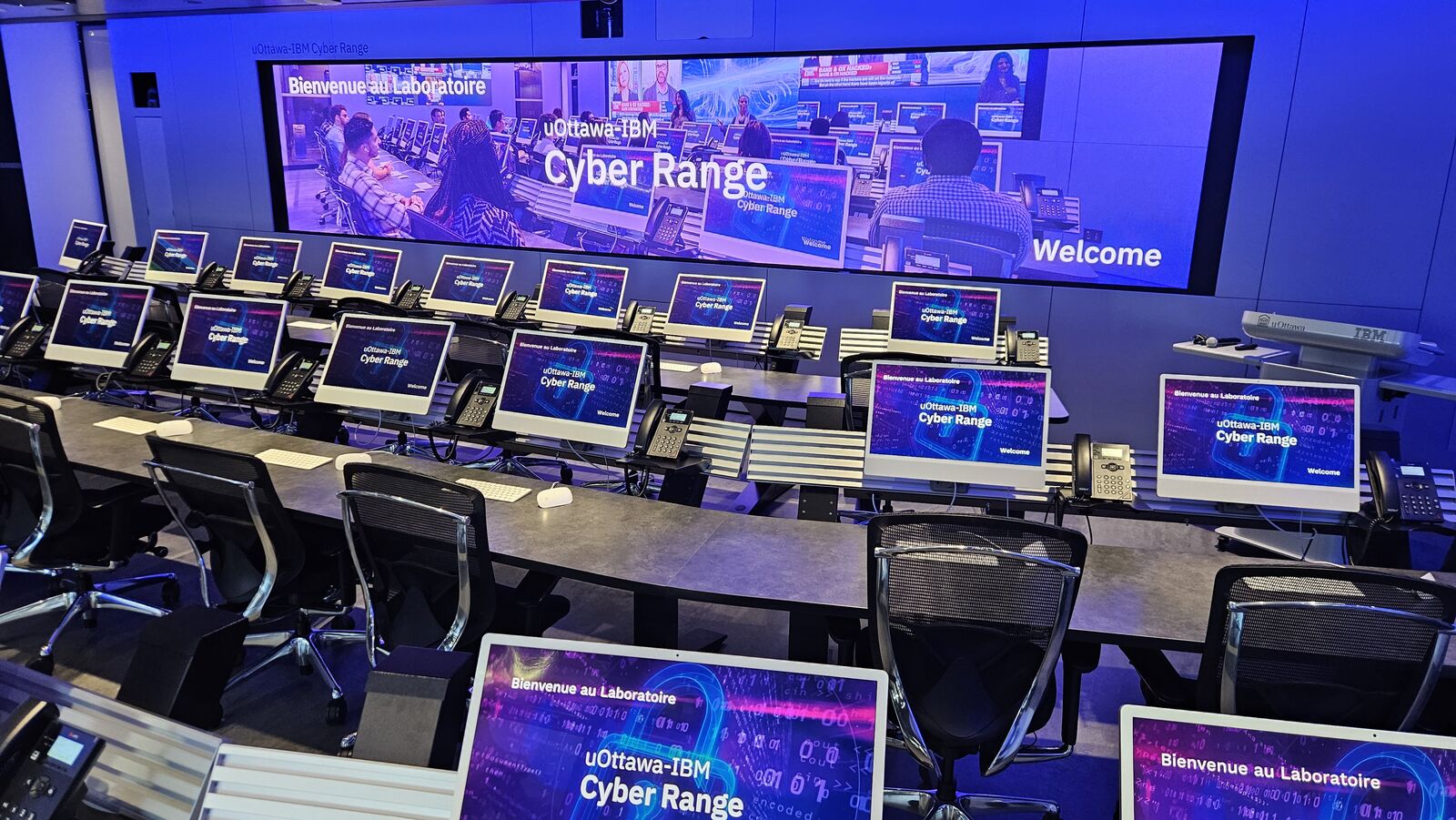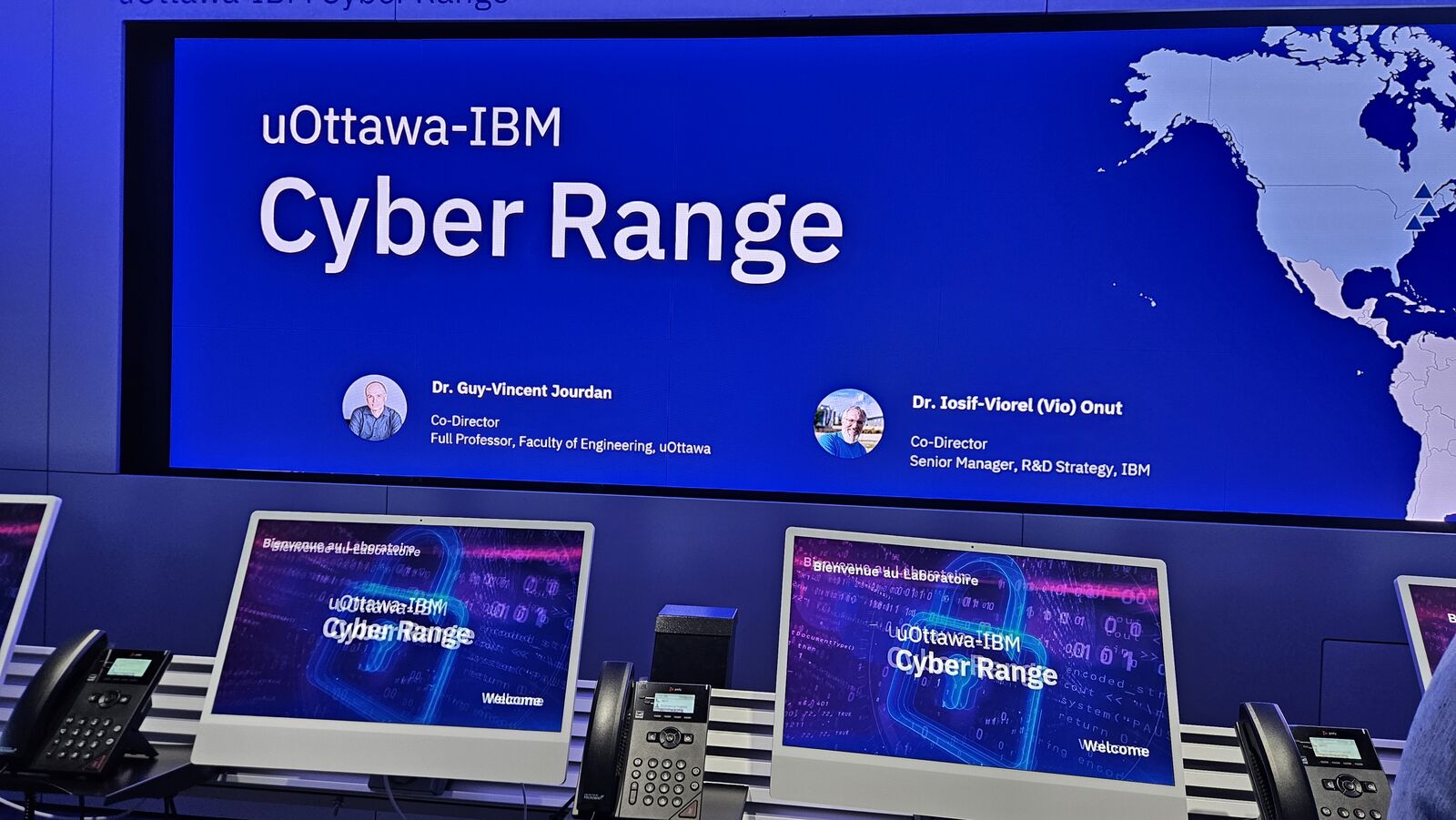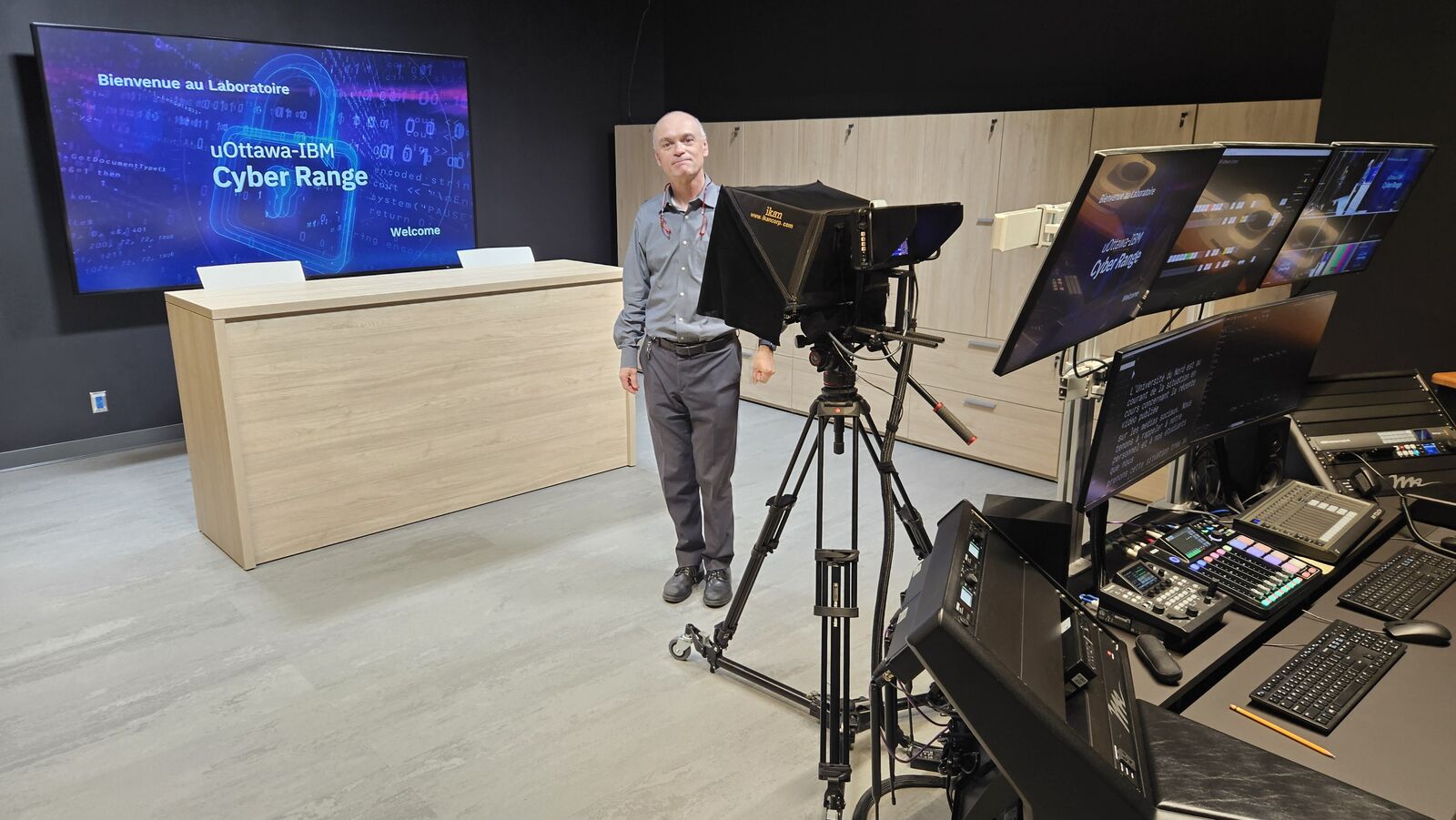University of Ottawa Cyber Range: A Hands‑On Look at a Cutting‑Edge Teaching Tool
Nov 15, 2025 by Thibault Debatty | 514 views
During a short trip to Ottawa a few weeks ago I had the privilege of touring the university’s state‑of‑the‑art Cyber Range (CR). This Cyber Range blends advanced technology, pedagogy, and cross‑institutional partnership to create an immersive environment for learning and research in cybersecurity.
A cyber range is essentially a sandboxed network that replicates real‑world systems and traffic, allowing students and professionals to experiment with defensive and offensive tactics in a risk‑free setting. The Ottawa CR does exactly that—and then some.
a Powerful Teaching Platform
The facility includes a dedicated cyber‑range room where the core lab space is filled with networked all-in-one computers, large screens, and a camera array that feeds into an observation lounge. These rooms allow instructors to monitor progress in real time, record sessions for debriefs, and provide instant feedback.
The facility also includes a fully-equipped recording studio that allows to record interviews before or during the exercise.
The Cyber Range engine itself is the Cyber Integration, Test and Evaluation Framework (CITEF) developed by Nexova (formerly RHEA), and based on the Open Nebula platform.
The curriculum is robust: the range hosts around ten complex scenarios that are rich in audio‑video content, incorporating simulated social‑media services like TikTok and LinkedIn. Participants also run live‑interview simulations conducted by colleagues from the journalism faculty. In addition to these scenarios, the range regularly holds Capture‑The‑Flag (CTF) and OWASP events, totaling roughly fifty exercises per year. During the summer, the facility opens its doors to youth aged ten to sixteen, offering workshops two or three times per week.
The result is a vibrant learning ecosystem that feels as much like a professional incident‑response center as a classroom, engaging learners at every level—from beginners to seasoned security analysts.
Staff
The success of the Ottawa CR hinges on its lean, multi‑disciplinary team and its thoughtfully designed spaces. The four full‑time staff members handle logistics, scenario preparation, and day‑to‑day operations, while co‑op students contribute fresh ideas and help run labs. A few researchers bring cutting‑edge research to the range’s curriculum, and the AV crew ensures that all cameras and recording gear are maintained.
The head of the Cyber Range is actually a co-head composed of Professor Guy-Vincent Jourdan from uOttawa and Vio Onut from IBM.
Diverse Usage Scenarios
The CR is not limited to a single audience. Its flexible design accommodates university courses, external institutions, CTF & OWASP competitions, and summer workshops for youth. For example, CEOs and CISOs from other universities can observe or participate, while the SOC of uOttawa—monitoring a network of about sixty thousand users—is colocated with the range, creating a “win‑win” relationship: the SOC offers realistic scenario ideas, and the CR trains SOC staff in a controlled environment.
The IBM Collaboration: A Model of Public‑Private Partnership
What makes Ottawa’s CR stand out is its collaboration with IBM. IBM supplies the physical range, part of a global network of four IBM cyber ranges. uOttawa, on the other hand, provides the staff and curriculum expertise that bring the scenarios to life. This joint effort exemplifies how public institutions and industry can combine resources to create a robust, forward‑looking educational platform. In fact, the Ottawa CR is the only cyber range globally jointly operated by a university and IBM, showcasing a pioneering partnership.
Challenges
No cutting‑edge project is without obstacles. Some of the key issues identified during the visit include:
- The offline environment (no cloud services) limits certain real‑time threat simulations. Possible mitigations include exploring hybrid‑cloud or secure VPN setups.
- Licensing constraints (Windows, proprietary tools) may restrict scenario breadth. Negotiating academic licenses or using open‑source alternatives could help.
- Measuring success is hard to quantify participant progress. Implementing pre‑/post‑assessment tools and metrics dashboards could address this.
- Scenario exchange with other cyber ranges is limited. Developing a standardized repository and collaboration agreements would promote sharing.
Addressing these will keep the range at the cutting edge and ensure that its impact grows.
Takeaway
My time at the University of Ottawa’s Cyber Range reinforced two core lessons:
- Cyberspace education thrives in immersive, realistic environments. The Ottawa CR turns theory into practice and sparks a deeper understanding of threat landscapes.
- Public‑private partnerships amplify capabilities. The collaboration with IBM demonstrates that universities and industry can combine to build shared assets that benefit both academia and the broader security community.
Official page of uOttawa-IBM Cyber Range
https://www.uottawa.ca/faculty-engineering/spaces/cyber-range
This blog post is licensed under
CC BY-SA 4.0







